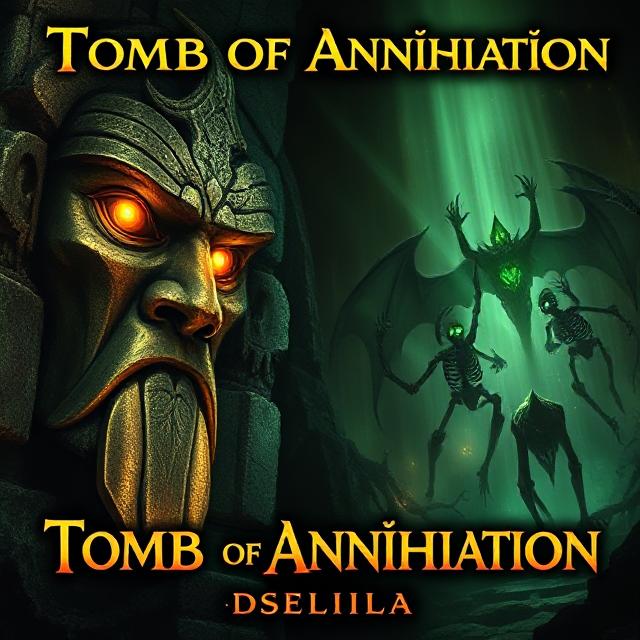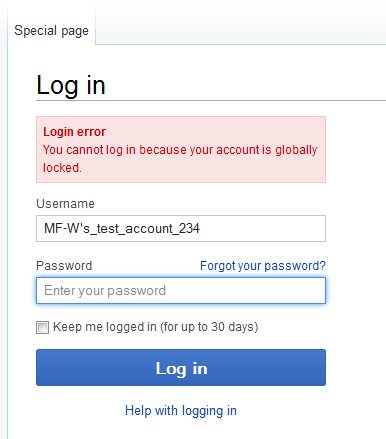You are sitting there with your Dungeons and Dragons team like you are about to begin a new campaign. The Dungeon Master pulls out a large book of adventure and at once declares, Before we start on this, I have to point out to you a disclaimer about this one.
You have played Tomb of Annihilation, and you know what I am talking of. It is not a typical alert to a light-hearted fantasy adventure. Dungeon Masters stress that one should know what this module is. It is not only danger–but there is no end of it. It is all about gearing up towards an experience that is specially difficult, emotionally weighty, and rich in themes to be handled cautiously.
Let’s break down why the Tomb of Annihilation disclaimer matters and what it actually means for your gameplay.
What Makes Tomb of Annihilation Different From Other D&D Modules?
Tomb of Annihilation is not like a typical D&D adventure. Unlike most of the modules where the challenges can be won through tact and teamwork, this module does not follow the same path.
The adventure was published in 2017 by Wizards of the Coast, and it takes place in Chult, a tropical jungle peninsula. Gamers have to walk in deadly jungles, solve intricate dungeons mazes, and face old magic to prevent a curse that kills one by one every person ever resurrected.
The tone of the module is also unique. It is not a light comedy; it is more like a survival horror. Death is not a far-fetched phenomenon but an everyday phenomenon. Characters are lost quickly. Traps are brutal. Resources are scarce. The party is aggressively opposed by the environment. It is commonly stated by experienced D&D players that it is one of the most difficult official adventures and you should not commit to it without knowing what you are getting into.
Understanding the Tomb of Annihilation Disclaimer
A DM is basically telling you when he provides you with a disclaimer to this module, this is not a typical adventure that you would find in a campaign. Here’s what to expect.”
A standard disclaimer addresses a number of issues. First, it makes you aware of high mortality rate- your character might perish forever and in a very short period of time. Second, it emphasizes the dramatic themes. It is a narrative of a curse of death that causes body horror and addresses serious questions of death and loss. Third, it talks about the issue of the colonial undertones and culture representation that have become controversial in the world of D&D.
A proper disclaimer is not one that intimidates you. It is aimed at having realistic expectations, whereby no one will get caught up or disappointed when the situation gets tricky. Simply put, the DM is telling him/her, I want you to enjoy this, and therefore we need to ensure that we are all on the same page of what kind of experience is this.
The Lethality Factor: Why Character Death Matters
Here’s the truth about Tomb of Annihilation: your character might not survive.
Death is dramatic, though, in most D&D games. Heroes have numerous opportunities to succeed in the plot. Not in this adventure. In this case, traps are capable of fast killing. Unwise decisions cause fatal results. The jungle, itself, with its poisonous creatures, disease, bad weather, is also an enemy.
This is thrilling to many players. The stakes feel real. Not all decisions are created equal since there is a cost of failure. The fact that it is dangerous is what makes it exciting.
Other players can find it unjust or irritating. They can believe that the death of their character is beyond their power or that it is the worry that makes the game not entertaining. Such a worry is legitimate, and this is why the disclaimer is important. This is important because you have to know before wasting time developing a character, whether you will be comfortable with this extent of risk.
Some practical ways DMs address this include:
- Allowing players to roll backup characters in advance so they’re ready if their character dies
- Adjusting trap difficulty slightly while keeping the overall dangerous tone
- Offering meaningful death scenes that feel heroic rather than cheap
- Giving advance warnings before particularly lethal encounters
The key is communication. If you’re not okay with frequent character death, tell your DM during the initial discussion. A good DM will adjust accordingly.
Beyond the Danger: Cultural Representation Issues
Here’s where the Tomb of Annihilation disclaimer gets more serious than just warning about difficult gameplay.
The setting of this adventure, Chult, has attracted the criticism of many players and reviewers. The jungle is depicted as exotic and mysterious, with the uncivilized dangers. The local people are also usually depicted as minor characters or as guides but not as being the key characters in the story. The arrangement reminds of the colonial adventure stories, the outsiders, who arrive, visit, and take away.
In order to see why this is important the source material should be considered. Tomb of annihilation is based on pulp adventure fiction, the one that brought about Indiana Jones. Those archetypal stories were frequently shot through with colonialist zeitgeist, of the non-Western cultures being exotic puzzle boxes that the Western adventurer had to crack.
Tomb of Annihilation replicates certain problematic trends by replicating that kind of dynamic, without thinking about it. This does not render the module evil or unplayable, it just requires one to be cautious with it.
Colonial Themes and Why They Matter in Gaming
The elements of the colonialism appear in the simple form of the adventure. Your party is an outsider, who comes and explores the remains of earlier civilisations, finds some powerful magic and other artefacts, takes them out, unravels the riddle, and goes.
On the one hand, this looks like typical adventure fiction. But in its deconstruction, it reflects actual colonial history when the rich people of other nations invade their territory, stealing their resources and leaving behind them in very little consideration of the native population.
This dynamic has been identified and disliked by many players of D&D nowadays. Some say it is just pulp inspired fiction that is not to be taken at face value. These two views are sound. The key is the realization of the presence of such dynamic in the module so that players may make their own choice whether they are comfortable with it or not.
A responsible DM can reframe this by:
- Portraying Chult as a thriving, self-sufficient culture rather than a land in need of “civilizing”
- Giving Chultan characters real depth and agency rather than making them NPCs who just help outsiders
- Centering local guides as true experts of their homeland
- Adjusting the narrative so the party works with locals rather than extracting from them
These adjustments keep the module exciting while making it feel more respectful and inclusive.
How to Prepare Your Players Before Starting
Attend to the Tomb of Annihilation disclaimer with a “Session Zero. During this first meeting, the DM and players discuss the type of game they want to play and limits which are relevant to both individuals.
In the first session, during the Session Zero, talk freely on several important points. Elaborate on the level of the danger and explain that death of characters may occur, but it is not unjust. Talk about body horror, grief, and mortality and ask whether everyone is okay with them. Discuss the issues of cultural representation, and the way the DM will deal with them. Ask whether anybody has something they do not want to discuss.
This dialogue spares the adventure of being marred. It merely makes sure that all are psychologically prepared to what follows.
Managing Player Expectations Effectively
The reason why a disclaimer is essential is that it controls expectations. Other players play well on rough, high stakes campaigns that are uncertain regarding survivability. Stories about heroic deeds and epic adventures are liked by others. The former are okay with darker topics whereas the latter is okay with light content.
Awareness of these preferences in advance makes the campaign easy. The players that love adventurous games are satisfied. Individuals wishing to have a different tone can choose whether the module is suitable to them or not. No bitterness towards unfair play, as it was decided at the beginning what kind of a game to play.
The benefit of an understandable disclaimer is to both parties involved in the DM and the players. In the case of the DM, it ensures the integrity of the module by ensuring that all people know the challenges of the module. To the players, it allows them to decide whether to be a part of such environment.
Running the Campaign Responsibly as a DM
If you’re a Dungeon Master considering running Tomb of Annihilation, know that running it responsibly requires more effort than some other modules. You need to think about how you’re portraying cultures. You need to consider how you’ll handle the emotional weight of frequent character deaths. You need to check in with your players regularly to make sure everyone’s still having fun.
This doesn’t mean you can’t run the module as written. It means you run it thoughtfully. You make deliberate choices about which themes to emphasize and which to adjust. You stay attuned to your players’ comfort levels and adjust accordingly.
Practical Adjustments You Can Make
Being a DM allows you to make changes to the wording of Tomb of Annihilation. You may make it look and feel the part without any concerns.
Some DMs tone down the horror. They substitute graphic accounts of decay with mystic accounts of the curse. They also reduce the frequency of the presence of deadly traps, but retain a threatening atmosphere. Others reconsider Chult completely and introduce the vibrant locals and authentic culture.
There are DMs who maintain the darkness, but introduce weight. When one of the characters pass away, he/she does it in a notable fashion so that the death is not regarded as money-grabbing.
You are in charge. Tomb of Annihilation is nothing but a guide. Enter the specifics that suit what your group wants.
Safety Tools and Communication Strategies
In addition to the first disclaimer, there are various tools that are used to control the experience in the real-life gameplay. The X-card is a common trick: the players are welcome to raise a card silently in case of anything that makes them feel uncomfortable, and the DM can change the story without stopping the game to have a long conversation.
Another approach is Lines and Veils. Players highlight subjects that are either taboo (the line) and those that they would rather not see on screen or refer to in a vague manner (the veil). This will allow players to remain cozy and yet encountering difficult content.
Regular check‑ins help too. Ask your players about the way they are feeling after every session, particularly in the early days of the campaign. Are they enjoying the game? Are they being uncomfortable about anything? What’s working well? It allows you to modify the experience in real-time by keeping the conversation open.
The Connection Between Difficulty and Storytelling
Here is an important point to note: the challenge of Tomb of Annihilation is not random. It’s tied to the story. The campaign is focused on a curse killer and rotting. The bad weather and wartime support the ideas of death and life. The threat makes the narrative emotionally strong.
With that said, you may choose to change the difficulty leaving the story itself. You do not have to remove deadly pitfalls at the cost of difficulty. You have the ability to adjust difficulty of encounters and retain the tension.
It is possible to keep the emotional burden of the story and at the same time provide the players with agency and opportunities to win.
These factors require a careful consideration of equilibrium but it is indeed possible.
Final Thoughts
The Tomb of Annihilation admonition is not mere red tape. It is an indication that this module is not the same- it is stiffer, darker and full of the themes which must be approached with great care. It introduces things that are worth thinking about.
That does not imply that it is bad or it cannot be played. There are numerous groups with unbelievable stories of running this module. They love the challenge, love the darkness, and cogently treat the themes. They make adjustments to whatever should be changed and retain what works.
The actual magic occurs when everybody on the table has a clear understanding of what they are getting into and all of them consent on the same. That is made possible by the disclaimer and turning an otherwise annoying experience into what is really memorable.
The thing is, in case you are considering playing this module, then have that talk with your DM. Ask the hard questions. Set boundaries. Agree on adjustments. After that take the plunge and see what has been causing such a buzz in the D&D community. With some preparation and constant communication, the tomb of annihilation could be one of the best campaigns you would ever have played.



